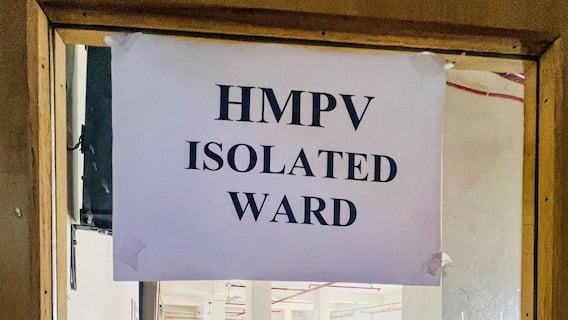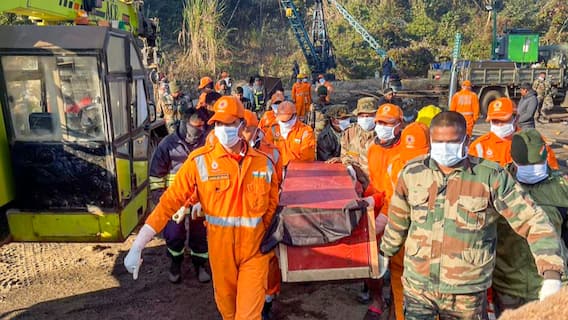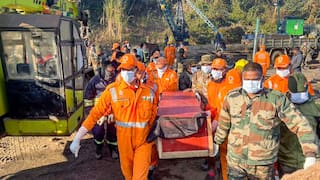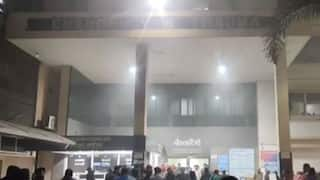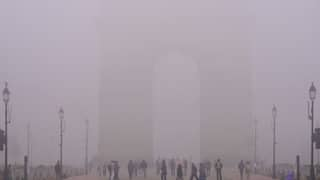EXPLAINER: Humanitarian corridors, from Syria to Ukraine
Beirut, Mar 8 (AP): As more Ukrainian towns and cities come under siege, concern is mounting for millions of civilians in the crossfir.

Beirut, Mar 8 (AP): As more Ukrainian towns and cities come under siege, concern is mounting for millions of civilians in the crossfire.
Russia has announced the establishment of safe corridors to allow civilians to leave, but there appeared to be few takers. Evacuation routes led mostly to Russia and its ally Belarus, drawing withering criticism from Ukraine and others. And Russia continued to pound some cities with rockets even after the announcement of corridors.
Such tactics were common during the Syria war after Moscow entered the war in 2015 to shore up President Bashar Assad's forces.
So what are humanitarian corridors and why are they controversial? WHAT ARE HUMANITARIAN CORRIDORS? Humanitarian corridors arise when a population is caught in a war zone, particularly when a city or town is under siege. The idea is that hostilities are halted for a certain time to allow civilians who need to flee to do so along designated routes or to allow urgent humanitarian aid to enter for civilians who remain.
The term was first evoked during the Bosnian War in the 1990s, when the UN set up “safe areas” for civilians. But the attempt was seen as a failure since the UN was unable to protect the zones when they came under attack.
HOW WERE THEY USED IN SYRIA? During the Syrian civil war, the Russian and Syrian militaries pursued a strategy of systematically besieging opposition-held cities, towns and districts, sometimes for months or even years. The sieges rained destruction on the populations, with airstrikes, artillery and rockets blasting residential districts, hospitals and infrastructure.
Eventually in each case, the Russians and Syrians would offer humanitarian corridors, telling civilians and even some fighters they could leave. Most would then be funnelled into the northwest province of Idlib, which remains to this day the last opposition-held enclave in Syria.
Humanitarian corridors were created for besieged districts around Damascus and parts of the cities of Homs and Hama. The largest and most famous was for eastern Aleppo in late 2016, capping four years of devastating siege.
WERE THEY SAFE? Russian and Syrian forces were often accused of breaking the cease-fires surrounding humanitarian corridors with continued bombing of the besieged cities.
“When they talked about these humanitarian corridors or ceasefires, we never believed them. How can you trust someone to stop who is bombing you all the time?” said Afraa Hashem, a 40-year-old activist who survived the Aleppo siege and now resides in London.
She recalled how during a humanitarian corridor ceasefire on December 14, 2016, the house where she was sheltering with her family was hit by incendiary bombs.
There were also cases of civilians or fighters being detained by Syrian forces as they tried to use humanitarian corridors despite promises of safe passage. In some cases, opposition fighters reportedly opened fire on corridors, either to prevent people from leaving or to spark clashes.
Still, tens of thousands of people used the corridors to get out of the combat zones. They make up the bulk of the 3 million people crowded into Idlib province, which is surrounded by Syrian forces and is still hit by Russian airstrikes.
"After four years under bombs, they forced us to leave, that's what it is” said Hashem. “They didn't save us. They put us in another area of bombs, Idlib.” SO WERE THE CORRIDORS EFFECTIVE? Ultimately, they were effective in attaining the goals of Russia and the Syrian government: To regain control of opposition areas.
Critics say Russia and Damascus benefited another way as well by carrying out mass demographic change, removing large opposition populations, many of whom have not been able to return to their homes.
Human rights groups and humanitarian agencies point out that under international law, every effort should be made to ensure civilians' safety no matter where they are.
The tactic of siege-plus-humanitarian corridor, they say, essentially gives residents a brutal choice between fleeing into the arms of their attackers or dying under bombardment.
They said the offer also gives an illusion of legitimacy to the mass slaughter of civilians who remain behind once the siege resumes in full force.
“It is not like Russia can create a humanitarian corridor for two days and then say, Well, we've done our job, now we can destroy everything,'” said Sara Kayyali, Syria researcher for Human Rights Watch. (AP) VN VN
(This story is published as part of the auto-generated syndicate wire feed. No editing has been done in the headline or the body by ABP Live.)
Trending News
Top Headlines






